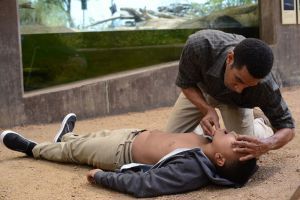
DALLAS, TX--African American children living in socioeconomically disadvantaged neighborhoods are significantly less likely than their Caucasian counterparts in disadvantaged or wealthier areas to receive CPR from a bystander, according to new research in Journal of the American Heart Association, the Open Access Journal of the American Heart Association/American Stroke Association.
Prior studies have examined bystander CPR rates in adults, but this is the first time racial and socioeconomic factors have been analyzed exclusively in children in the United States.
An estimated 7,000 children suffer cardiac arrests outside the hospital each year, according to American Heart Association statistics.
Investigators at Children’s Hospital of Philadelphia (CHOP) used the Cardiac Arrest Registry to Enhance Survival (CARES) database to examine factors influencing bystander CPR rates for pediatric non-traumatic out of hospital cardiac arrests from 2013-2017.
A total of 7,086 cardiac arrests were noted in the CARES catchment area between 2013 and 2017 with 61% occurring in infants, 60% in boys, 31% among white kids, 31% among black kids, 10.5% among Hispanics, 3% other and 24% where ethnicity was unknown.
Among the findings:
- Overall, 3,399 children (48%) received bystander CPR.
- Compared to white children, bystander CPR was 41% less likely for black kids; 22% less likely for Hispanics and 6% less likely among other ethnic groups.
- Black children living in majority black neighborhoods with high unemployment, low education and low median income were almost half as likely to receive bystander CPR compared to white children with rates of (59.7% versus 32.1%).
“We believe this is the first study to describe the possible role of racial and sociodemographic factors in provision of bystander CPR to pediatric cardiac arrest in the United States,” said lead investigator Maryam Naim, M.D., a pediatric cardiac intensive care physician at CHOP.
In 2017, the researchers published initial data from the study, but at that time the reported associations were unclear, noted lead investigator Maryam Naim, M.D.
“When analyzing the epidemiology of bystander CPR in children in the United States [in 2017] we found lower bystander CPR rates in black and Hispanic children compared to white children but weren’t sure if this was due entirely to racial disparities or if it was also associated with neighborhood socioeconomic factors like income, employment, and educational status,” said Naim, a pediatric cardiac intensive care physician at CHOP.
These results demonstrate a critical need for focused intervention in low-income, non-white, lower education neighborhoods where targeted CPR training might enhance outcomes in children, Naim said.
“As most bystander CPR is provided by family members, lower response rates are likely due to a lack of CPR training and recognition of cardiac arrests,” she said, noting that teaching CPR to parents before a newborn is released from the hospital, or during pediatrician visits would be good opportunities for such training.
Co-authors are Heather Griffis, Ph.D., Lihai Song, M.S.; Vinay Nadkarni, M.D.; Kimberly Vellano, M.Ph.; Bryan McNally, M.D.; and Rita Burke, Ph.D. Author disclosures are on the manuscript.
The Cardiac Clinical Research Core at CHOP funded the study. The CARES registry was funded by the Centers for Disease Control and Prevention until 2012, and today is funded by the American Heart Association, the American Red Cross, Stryker Corporation and Emory University.
SOURCE: American Heart Association
